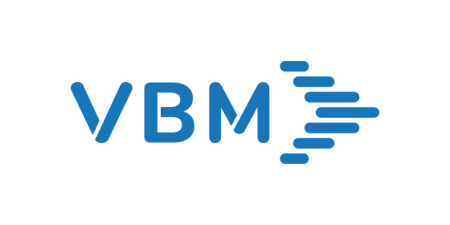
Industry:Energy and Utilities
Region:Europe
Client:Enerjisa
Enerjisa’s journey to digital excellence

$400,000
saved in operational costs
90,000
invoices processed in eight months
60
processes automated
Client Overview
Enerjisa stands as a pioneer in Turkey’s energy sector, providing electricity distribution, retail, and client solutions that serve more than 10 million customers across 14 provinces. With a commitment to sustainability and operational excellence, Enerjisa has established itself as a leading player in the industry.
Partner

Enerjisa, a cornerstone of Turkey’s energy landscape, has long been a reliable source of power for millions. Five years ago, the company faced the growing challenge of managing an evolving IT environment while balancing its sustainability goals.
It had a complicated mix of siloed systems, each responsible for managing specific aspects of the business. From field operations to billing and customer information, these systems worked in tandem yet were increasingly straining the resources of the central IT team.
“We had been studying analyst reports and saw automation mentioned regularly as a way to streamline complex systems and processes,” Hasan Inan, Enterprise Architect and Linux Platform Manager at Enerjisa recalls. “We started carefully exploring the technology and how it might benefit us,” Inan adds. “Without doing so, our traditional processes had the potential to hinder our business.”
To select the most suitable vendor, Enerjisa conducted a rigorous evaluation process. Multiple providers were considered, and independent proof of concepts (PoC) were executed for each to assess their capabilities. After a thorough comparison, UiPath was chosen as the preferred automation platform vendor thanks to its performance, flexibility, and ease of integration with Enerjisa’s existing systems.
With UiPath in place, the energy firm partnered with the long-standing Turkish UiPath partner, VBM Group. Together, Enerjisa and VBM began exploring two initial automations that served as the foundation for the company’s broader implementation. These were pivotal in demonstrating the effectiveness of UiPath capabilities, helping to streamline critical processes within the business.
Lighting the spark
The first port of call was to find a way to support its growing customer base better, addressing a major pain point in the customer billing process. “We were facing a high volume of inquiries related to invoice discrepancies, overwhelming the CRM and billing teams,” recalls Fatih Cenesiz, Enterprise Architect at Enerjisa.
The manual process of investigating and resolving these issues was too time-consuming, often taking up to two or three days to respond, per case.
Fatih Cenesiz • Enterprise Architect at Enerjisa
This impacted customer satisfaction and placed significant pressure on the teams involved. The solution was to automate the invoice investigation process, following predefined rules to identify and address discrepancies quickly.
Once automated, the billing team could respond to customer issues in a matter of minutes, dramatically improving the overall customer experience. The bot successfully checked over 15,000 customer issues. It would have taken 25 employees to achieve the same outcome, meaning their time could be used on more valuable work, while reducing operational costs by $35,000.
The bots handled everything that could be resolved, while more complex cases were escalated to staff. Cenesiz jokes, “The process was so fast that customers started saying it was too quick—they thought their issues weren’t being properly investigated. But they were, so we had to slow down the response time of our bots.”
The success of this PoC led to a second handling compliance reporting, a critical function owing to the strict regulations in Turkey’s energy sector. Enerjisa needed to generate regularly and submit detailed reports to various regulatory bodies. Inan mentions, “There were over 285 daily reports to manage, each of which had to be accurate and available on time.” Failure to comply could result in financial penalties or other regulatory repercussions.
The company built a portal that allows regulators to log in and check all the reports. Enerjisa wanted to ensure this portal worked efficiently so all data was available instantly. To address this, the team created an automation.
Each morning, a robot logs in as a regular user, runs all the necessary reports, and checks their technical availability and data quality. By the start of each workday, all reports were complete. If done manually, it would have sapped the time of three people, who can now focus on other tasks. After the initial success of the two PoCs, the momentum for Inan and the enterprise architecture team only grew stronger.
Powering up processes
The results were well-received by employees and senior leadership alike, and excitement quickly spread across the business. “We had the CTO, CIO, and other managers from both the business and IT sides championing automation,” Cenesiz mentions proudly.
The PoCs evolved into a larger, company-wide endeavor as the enterprise architecture team looked to increase awareness.
We delivered over 20 training sessions with hundreds of employees across different departments to further increase education and adoption of automation.
Ali Kaya Kilinc • RPA Software Development Team Lead
It was no longer just isolated successes. Automation was becoming a cornerstone of the company’s operational strategy, improving efficiency, accuracy, and staff satisfaction across the board. This saved the company over $400,000. A pipeline was created, with 60 processes now automated. Inan highlights, “Management even pushed for more bots and to deploy them at a faster pace. They could see the good it was doing in transforming the business.”
So, Inan and his team took on a larger project to truly push the limits of what they could achieve with automation—the company’s invoice approval process. The purchasing department had long been bogged down by the time-consuming task of handling invoices. The automation would address two main types: Electronic invoices in XML format and paper invoices, which were either scanned or received as PDFs or JPEGs.
While processing electronic invoices was relatively straightforward, paper-based invoices posed a bigger challenge. “Before automation, the finance and purchasing teams had to spend countless hours converting these documents into a digital format before they could be recorded and approved,” continues Cenesiz.
The introduction of UiPath document understanding capabilities changed everything. With the automation in place, the system could now handle both electronic and paper invoices efficiently. The robot was trained to understand and extract information from various document formats, including PDFs and images. This not only saved the purchasing department a significant amount of time but also money, reducing operational costs by $300,000, all while speeding up the entire approval process.
In less than eight months, the bots handled more than 90,000 invoices. In fact, the project’s success generated so much enthusiasm within the department that it sparked a wave of new requests for additional robots. This success story became one of the key examples of how automation could drive tangible results, paving the way for further digital transformation.
The future looks bright
Now, Enerjisa is actively positioning its automations to drive sustainability efforts, both internally and for its customers. By automating various processes, such as the generation of green energy certificates, Enerjisa is streamlining operations and helping customers meet their sustainability goals more effectively. Inan adds, “All our automations are driven by wider business decisions and sustainability is a big part of that.”
Looking to the future, Kilinc and his team plan to further expand its initiatives, continuing to use automation and AI to streamline operations and enhance sustainability.
Our goal is to double the number of automated transactions, aiming for two million in the next year.
Ali Kaya Kilinc • RPA Software Development Team Lead
To achieve this, the team is exploring more advanced technologies like generative AI.
As Enerjisa continues to push the boundaries of automation, its experience offers valuable insights for others looking to embark on a similar journey. Inan emphasizes, “Your organization must be ready for automation. This is something you cannot rush into if you want to get it right.” Implementing a well-structured governance model and starting with a thorough assessment of an organization’s needs and its business environment is key.
Cenesiz concludes, “You must select the right technology and partners in this process too. Taking the time to find the right support, while building a solid foundation pays off in the long run.” The enterprise architecture team also highlights the importance of establishing a robust and diverse internal team to help significantly improve outcomes and create more scalable results.
Enerjisa’s journey demonstrates how automation, when strategically implemented, can drive significant benefits, both for internal processes and customer-facing operations. The ongoing focus on sustainability and technological innovation positions the business as a forward-thinking leader in the energy sector and across Turkey. As the company continues to scale its automation efforts, Enerjisa sets a strong example for others looking to embrace digital transformation in tandem with sustainability.




